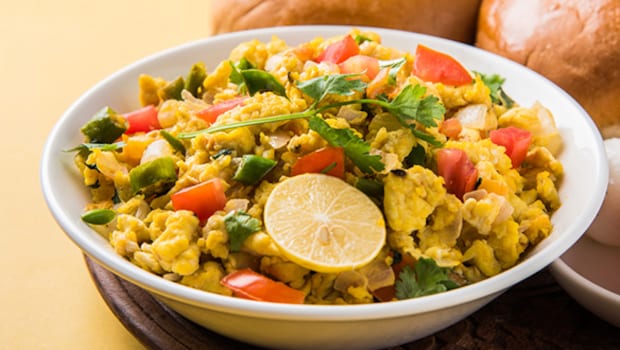Akuri and bhurji are two egg favourites that have been a staple in Indian cuisine for ages. If you've ever walked into a Parsi cafe and ordered akuri, you may have wondered how different it really is from the good old bhurji. At first glance, both look like scrambled eggs spiced up with masalas. But food lovers will tell you there's a world of difference in taste, texture and even the cooking philosophy behind the two. While both dishes may seem similar, they have distinct characteristics that set them apart. Let's dive in and explore the differences between akuri and bhurji. From the ingredients used to the cooking techniques employed, we'll uncover what makes each dish unique.
What Is Akuri?
Akuri is a traditional Parsi dish that is loved for its rich and delicious flavours. It's made with soft and creamy eggs cooked with onions, tomatoes, ginger, garlic and special Parsi spices. Fresh herbs and a squeeze of lime juice are added at the end to give it a fresh taste.
What Is Bhurji?
Bhurji is popular across North India and street food stalls, and is known for being spicier, drier and heartier. It's like the street cousin of akuri. It's made with onions, green chillies, tomatoes, turmeric, and lots of red chilli powder, and is usually cooked until the eggs are firm and crumbly.
Also Read: How To Make The Perfect Eggless Bhurji With Everyday Kitchen Staples

Photo Credit: iStock
What Is The Difference Between Akuri And Bhurji? Here Are 5 Key Differences:
1. Texture
Akuri has a soft and creamy texture, similar to scrambled eggs, while bhurji is crumblier. The eggs in akuri are cooked gently, retaining their moisture, whereas bhurji is cooked until the eggs are firm and break apart easily. This difference in texture gives each dish its unique character.
2. Spice Level
Bhurji is notably spicier than akuri, thanks to the generous use of red chilli powder and green chillies. Akuri, on the other hand, uses more subtle spices like jeera and black pepper, giving it a milder flavour. This difference in spice level caters to different tastes and preferences.
3. Cooking Method
The cooking method for akuri and bhurji differs significantly. Akuri is cooked gently over low heat, allowing the eggs to absorb the flavours of the spices and herbs. Bhurji, by contrast, is cooked over higher heat, stirring constantly, which helps to break down the eggs into crumbly bits.
4. Flavour Profile
Akuri has a more nuanced and complex flavour profile, with the freshness of coriander and lime juice adding a bright note. Bhurji, on the other hand, has a bold and hearty flavour, with the spices and chillies dominating the taste. These distinct flavour profiles set the two dishes apart.
5. Regional Influence
Akuri is a traditional Parsi dish, reflecting the community's love for rich and aromatic flavours. Bhurji, by contrast, is more commonly found in North Indian street food and cuisine, where bold and spicy flavours are often preferred. This regional influence has shaped the characteristics of each dish.

Photo Credit: iStock
What Are The Health Benefits Of Akuri?
Eggs in akuri provide a good source of protein, vitamins and minerals. They are rich in essential nutrients like vitamin D, vitamin B12 and iron. Eggs also contain antioxidants that help protect the eyes and brain. When consumed in moderation, akuri can be a nutritious and healthy part of a balanced diet.
What Are The Health Benefits Of Bhurji?
Bhurji is also a good source of protein and essential nutrients. It can help support muscle health and provide energy. With a balance of spices and ingredients, bhurji can be a flavourful way to incorporate eggs into your diet.
What To Serve With Akuri?
Akuri is traditionally served with bun maska and tea for a classic Parsi breakfast. You can also pair it with paratha, roti or rice for a satisfying meal. Experiment with different types of flatbread or add some fresh herbs for added flavour.
Also Read: Move Over Paneer Bhurji, This Pari-Style Paneer Akuri Will Be Your New Favourite
What To Serve With Bhurji?
Bhurji is commonly served with pav or paratha for a delicious street food experience. You can also serve it with roti, rice or naan. You can even add some fresh cilantro or lemon juice for extra zest.
Now that you've learned the difference between akuri and bhurji, you'll be able to appreciate and enjoy these popular egg dishes with confidence.









